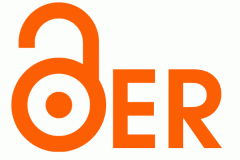In what ways are textbooks a challenge for students?
Of course the most commonly encountered challenge is the sky high prices of a lot of textbooks. Especially when these textbooks are absolutely required for class while the material could be learned just as well with cheaper resources. Another challenge for students may be determining if the textbook is really comprehensive in learning the entire material for class or just the professor’s version of the material that he/she thinks is sufficient for students to just pass the class. Lastly, every student learns material in different ways. Some are visual learner and some are okay with a lot of text, assigning one textbook that might not be suited to a large group of students may prove unhelpful to some students.
What is one way OER addresses these challenges? What is one way OER fails to address them?
One way OER addresses the price challenge by making a lot of useful educational resources available not only to students but to teachers as well. The teachers can assess these resources and may determine that a lot more students may perform better in class if all of them have access to the resources unhindered by finances. One way OER fails to address challenges is in terms of content. The content may not be comprehensive enough as it might be in higher prices textbooks because effort in making the content may be held back by the lack of financial reward
Should students evaluate textbooks as part of their regular classwork/education? Why or why not?
Yes, they should so that professors that eventually pick the textbooks for class take the perspective of students into account. Because professors are so familiar with the content already then they might not realize how hard a textbook may be for a beginner to interpret.
Imagine you are a professor choosing a textbook for your class. What are three important ideas to consider when selecting a textbook for students?
- Affordability- If the price is anything above a $100 for the textbook then a lot of students are going to have a hard time managing the expense. A consideration can be made if the text book is really good content wise and has a cheaper digital version available compared to the hard copy.
- The amount of detailed and relevant pictures in the textbook. Pictures make the book interesting and visually pleasing to read and they are also easier to retain and interpret. Colorful pictures as well as real life pictures can give a student’s mind a break from all the overwhelming text.
- How detailed the textbook is in terms of explaining the content. A lot of students may prefer books with simplistic and to the point ideas represented plainly. I believe that a student learns more and is able to apply the material if they are presented with examples, case studies and challenging concepts in a comprehensive manner.
What is the most important thing you learned from this seminar?
I learned about all the legal and financial aspect that goes into creating a text book such as funding and copyright. Taking all these into account, I realized that sometimes textbooks are not unnecessarily high priced. A lot of labor and equipment go into making these books in terms of intellect, printing and publishing costs, advertising costs etc. and the education we obtain in return may be worth the price.


